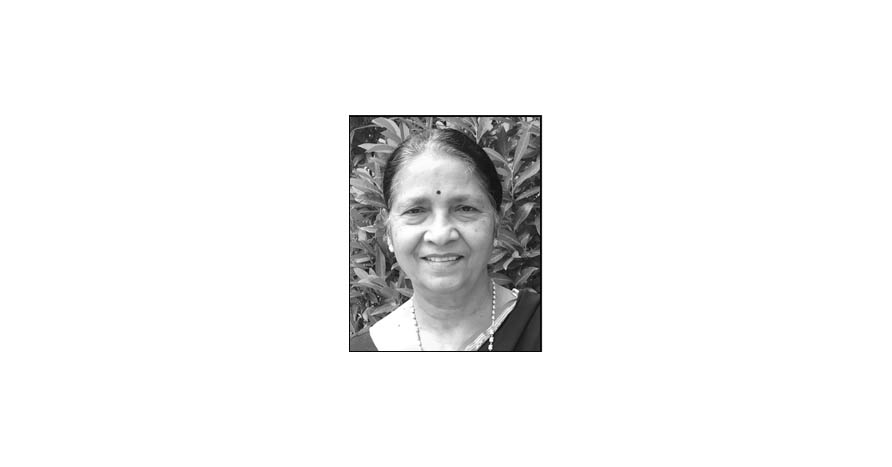S.Rajarathnam renowned Tax – Consultant and Prolific Writer
Esperanto was an attempt to find a common language
for all the world. It is recognised by UNESCO in 1954 and recommended by French Academy of Sciences. There is only one country, San Marino, which adopts Esperanto as the medium of instruction of International Academy of Sciences
Language plays a great part in life. S.G. Nelson in his book, “How Language is Life” wrote “Language is much more than a vocabulary of words. Language is how people express their feelings and show their individuality, and when different age groups are together, people of all ages must learn how to act around other groups.”
The story of origin of languages
Language barrier comes in the way of better understanding of the people as between them, but is also an impediment to development. The importance of language as a unifying force in absence of which there will be chaos is most tellingly illustrated in a biblical story of the city of Babel recorded in Genesis 11:1-9. The story appears in different version in Sumeria and Babylon. Israel refers the story of Babel as one of rebellion by the sinners who instigated both men and women to see whether heaven is made of clay or of brass or of iron. They had built a tower to a height of four hundred and sixty three cubics. Among those forced to join the construction, a woman was not allowed to be released in the hour of child birth, so that she gave birth to a child continuing to do the work carrying the child in her apron. This is one of the version of the story to justify the anger of Gods to stop the invasion of Heaven by the people. It is stated that the Lord said to the gods, “Indeed the people are one and if they all have one language, this is what they will do. Come, let us go down and confuse their language, that they may not understand one another’s speech.”
There are stories similar to Babel both in Hebrew in Book of Mormon among Jews, story of the Great Ziggurat of Babylon and the Arab story of Minaret of Samarra. This was the story in ancient world about the origin of language.
Language barrier in scientific research
A report in The Times of India dated 3rd January, 2017 points out language barrier in scientific research in following words:
“Over a third of new scientific reports are published in languages other than English that can lead to important science being missed at international level, contributing to biases in understanding, according to a Cambridge study that seeks translations of studies’ basic summaries in multiple languages.
Besides the international community missing out on important science, language hinders new findings getting through to practitioners in the field, the “Languages are still a major barrier to global science” paper published in `PLOS Biology’ Journal last week pointed out.
Dr.Tatsuya Amano from Cambridge’s department of Zoology said: “while we recognise the importance of a lingua franca, and the contribution of English to science, the scientific community should not assume that all important information is published in English…. Language barriers continue to impede the global compilation and application of scientific knowledge”.
The researchers point out an imbalance in knowledge transfer in countries where English is not the mother tongue, saying “much scientific knowledge that has originated there and elsewhere is available only in English and not in their local languages”.
The Cambridge team also conducted a litmus test of language use in science. They surveyed the web platform Google Scholar – one of the largest public
repositories of scientific documents – in a total of 16 languages for studies relating to biodiversity conservation published during a single year, 2014.
Of the over 75,000 documents some 35.6% were not in English. Of these, the majority were in Spanish (12.6%) or Portuguese (10.3%). Simplified Chinese made up 6% and French 3%.
The researchers also found thousands of newly published conservation science documents in other languages including several hundred each in Italian, German, Japanese, Korean and Swedish. Lead author Amano and his colleagues said that when conducting systematic reviews or developing databases at a global scale, speakers of a wide range of languages should be included in the discussion.”
Language barrier in education
A study shows that foreign students in U.S. were found to have developed negative attitudes because of language barrier leaving them to face prejudice, isolation and discrimination contributing to “awkwardness, anxiety and uneasiness, self-consciousness, defensiveness, suspicion, hostility, inferiority as well as superiority complexes”. When they are able to communicate, there is greater respect for each other, comfort, confidence and happiness.
Another study points out how the difference in language makes it difficult for realising a universal system of education. A study in California State University in 1995 reveals 24,000 of the freshmen entering the California State University system reported English was their second language; yet only 1,000 of these non-active speakers of English tested proficient in college-level English.
Translation is one solution
The Rosetta Foundation, a public institution celebrates every 19th April as “No Language Barrier Day”. The object is to create international awareness about the fact that the different languages need not be barriers to a global community. Languages will remain, but they need not be barriers. On the contrary, the different languages should be celebrated. It is by access to translation services and sharing information across languages, the language barriers get demolished.
Towards Reform
Division of the country on linguistic basis has contributed to the development of linguistic cultures, but has also created differences as is evidenced by river water disputes.
Language barrier to some extent solved by a mixture or diluted languages. Pidgin English in British colonies is an illustration. In India, Sanskrit had influence splitting up the mother language in the South. Influence in Urdu on Hindi introduced many dialects. The language spoken in a place like Bombay is not Hindi but Hindustani preferred by Mahatma Gandhi to be lingua franca in Roman script, so that it can more readily tide over not only the language difference, but adopt an easier script instead Devanagari and other scripts of Indian languages.
English has become the most popular language mainly due to colonisation. It dominates countries like Nigeria. While countries in erstwhile British Empire has adopted English to a smaller or larger extent as a second language.
Carroll Lewis, the English Mathematician and Author wrote,
“I said it in Hebrew – I said it in Dutch –
I said it in German and Greek:
But I wholly forgot (and it vexes me much)
That English is what you speak!”
Englishmen’s pride is ridiculed by Sir William Schwenck Gilbert, an English dramatist himself an Englishman in following words:
“He is an Englishman!
For he himself has said it,
And it’s greatly to his credit,
That he is an Englishman!”
Portuguese is adopted because of erstwhile rule in Portugal in Angola, while French follows French rule in Mauritius.
Esperanto was an attempt to find a common language for all the world. It is recognised by UNESCO in 1954 and recommended by French Academy of Sciences. There is only one country, San Marino, which adopts Esperanto as the medium of instruction of International Academy of Sciences. But it is no way near realisation of hope that it will be an acceptable common media. But Esperanto groups in most European countries and in China has Government support. World Esperanto Association has relationship with United Nations and UNESCO. Chinese radio gives daily news in Esperanto. Esperanto mainly based on European languages is more of Greek and Roman origin. It is phonetic and more pragmatic with words in common use with roots, prefixes and suffixes, besides singular and plural more standardized. But it would have become more popular, if African and Asian languages which are simpler had been adopted. It is not too late to simplify it and popularise it.
Communication with deaf and dumb is highly developed and capable of communication of complicated ideas. So is the script in shorthand.
There is a lone voice of Mr. Kumari Ananthan, a former legislator from India, who attempted to create interest of more aggressive initiative on the part of UNESCO towards a common language. His suggestion was welcomed by UNESCO as a commendable idea, but referred to its constitution requiring a member State to sponsor it as its official suggestion. He is making appeals to various leaders to propose such initiation, but he has been unsuccessful thus far in creating an interest in persons, who man the member State of any country.
Conclusion
The languages in the world was once considered to be 72 in number which increased with every study, so that presently it exceeds more than 1000. The need for an attempt at a more popular common language in a easier phonetic script more in line with shorthand has been stressed by scholars all over the world. It is time that this is taken up by the international community, so as to ensure greater communication amongst nation and people for better understanding to reduce tension and for international co-operation especially in scientific research towards greater prosperity.
The moon 4.51 billion year old
40 to 140 million years older than as predicted earlier
Based on an analysis of minerals from the moon called Zircons, which was published in ‘Science Advances’, it is arrived that the moon is 4.51 billion years old. As per this finding, the moon 40 to 140 million years older than previously thought.
The finding was arrived at from the minerals that were brought back to Earth by the Apollo 14 Mission in 1971, the research study of which was conducted by University of California, Los Augeles (UCLA).
The moon was formed by a violent, head-on collision between the early Earth and a “planetary embryo” called Theia. The Earth’s collision with Theia created a liquefied moon, which then solidified. Scientists believe most of the moon’s surface was covered with magma after its formation.
The researchers at UCLA were able to analyse eight Zircons in pristine condition. “Zircons are nature’s best clocks. They are the best mineral in preserving geological history and revealing where they originated.”
When scientists predict the age of the moon with evidence in western country, in this land, still people – even educated are addicted to the belief that moon is one among the nine planets which predict the destiny of individuals in the world!






